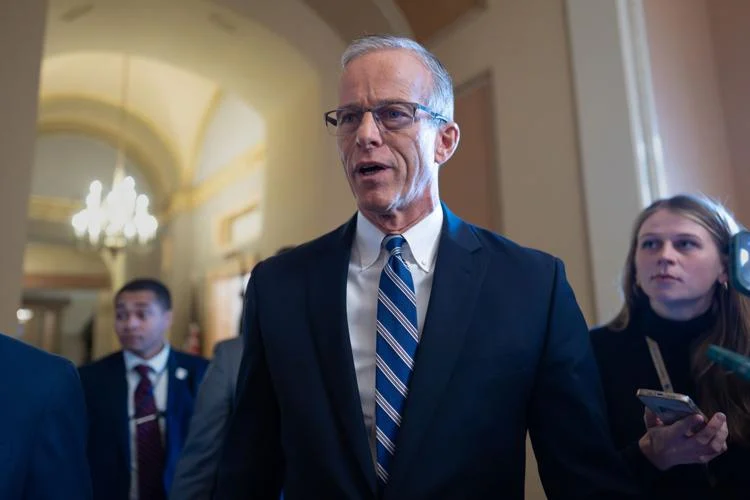The U.S. Senate took a critical step toward ending the ongoing government shutdown on Friday, advancing a short-term spending plan after a group of moderate Democrats broke ranks with party leadership to support the package. While the vote signals potential progress, lawmakers cautioned that the timing for a full reopening of the federal government remains uncertain.
The vote reflects growing urgency within Congress to restore government operations after multiple agencies and federal programs were partially shuttered, affecting millions of Americans and delaying key services. The shutdown, now stretching into its second week, has triggered disruptions across sectors ranging from national parks and public safety to administrative and social services.
Moderate Democrats Break With Leadership
The breakthrough came as a small bloc of moderate Democrats expressed willingness to support a bipartisan compromise aimed at keeping the government funded through the near term. Sources familiar with the negotiations said these senators were motivated by both constituent pressure and concern about the economic fallout of prolonged federal closures.
“We can’t let political disagreements continue to harm ordinary Americans,” said Senator Maria Thompson (D-NC), one of the moderates supporting the deal. “This package represents a practical step forward, even if it’s not everything we want.”
The deal, while modest in scope, would extend funding at current levels for key agencies, with limited adjustments for emergency spending and disaster relief. However, major disagreements remain on contentious policy provisions, including border security funding and discretionary spending limits, which could affect broader negotiations on the full fiscal year budget.
Bipartisan Compromise: A Fragile Balance
The funding package represents a bipartisan effort, with moderate Republicans expressing cautious support while party leaders continue to negotiate finer points. Analysts warn that while the Senate vote is a step forward, it does not guarantee an immediate end to the shutdown, as the measure must still pass the House of Representatives and be signed by the President.
“The Senate vote is symbolic of forward momentum, but there’s still a long road ahead,” said Lisa Carter, a senior analyst at the Bipartisan Policy Center. “Negotiators now have to reconcile House priorities with the Senate’s compromise, and even a small delay could extend federal closures.”
President [Insert Name] welcomed the Senate movement, emphasizing the need for swift action to minimize economic and social disruptions.
“Americans expect their government to function. We urge Congress to finalize funding without delay,” the White House statement read.
Economic and Public Impact
The shutdown has already caused disruptions for federal employees, contractors, and recipients of public services. Federal workers face furloughs or delayed paychecks, while agencies managing disaster relief and public safety report operational slowdowns. Economists have warned that prolonged closures could have negative ripple effects on consumer confidence and economic growth, particularly if disruptions affect critical sectors such as transportation, healthcare, and defense contracting.
According to the Congressional Budget Office (CBO), even short-term shutdowns can cost billions in lost economic activity and delayed federal spending. The current standoff also threatens to undermine investor confidence, as markets react to the uncertainty surrounding U.S. fiscal policy.
Next Steps and Timelines
Although the Senate vote reflects a tentative consensus, the timeline for fully ending the shutdown remains uncertain. The House of Representatives must approve the measure, and any amendments or changes could trigger further negotiations. Lawmakers on both sides acknowledged that while the deal is a positive step, a comprehensive budget agreement addressing the entire fiscal year is still necessary to prevent recurring shutdowns.
“We’re taking the first steps toward reopening the government, but our work is far from finished,” said Senator James Reynolds (R-TX). “A short-term fix buys time, but it doesn’t resolve the structural disagreements that brought us here.”
For now, federal employees and the public remain in a state of limbo, waiting for Congress to reconcile differences and restore full government operations. Observers say the coming days will be critical, as political pressure mounts on lawmakers to deliver a solution that balances policy priorities with the urgent need for funding.
Conclusion
The Senate’s advancement of a short-term spending plan represents a fragile but important breakthrough amid a tense shutdown standoff. With moderate Democrats breaking ranks and bipartisan support emerging, there is cautious optimism that federal operations could resume soon. However, the timeline for reopening the government fully remains uncertain, underscoring the complexity of U.S. budget negotiations and the high stakes of political compromise in a divided Congress.



